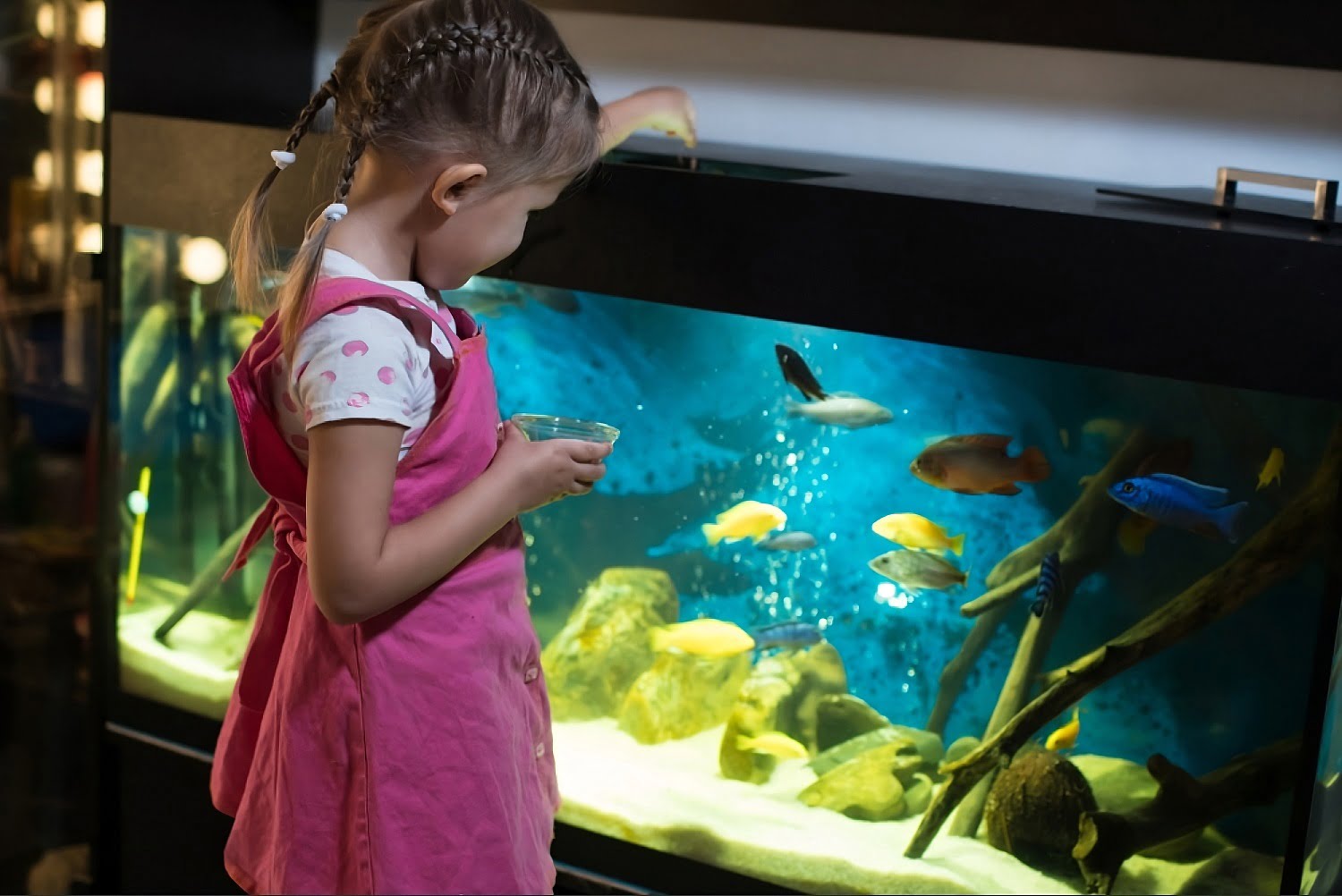Are you the proud owner of some finned friends? Whether you keep fish as pets or have a thriving aquarium, you know that keeping your aquatic buddies happy and healthy is key. And one of the most important factors in doing so is their diet.
In this article, we’ll explore the different types of fish food available, and help you choose the best options for your beloved fish. Get ready to learn everything you need to know to keep your underwater companions thriving!
Most Common Types of Fish for Aquariums
But before we dive into the world of fish food, let’s take a quick look at some of the most popular types of fish that are commonly kept in aquariums. Some of the most popular types of fish for aquariums include:
Guppies
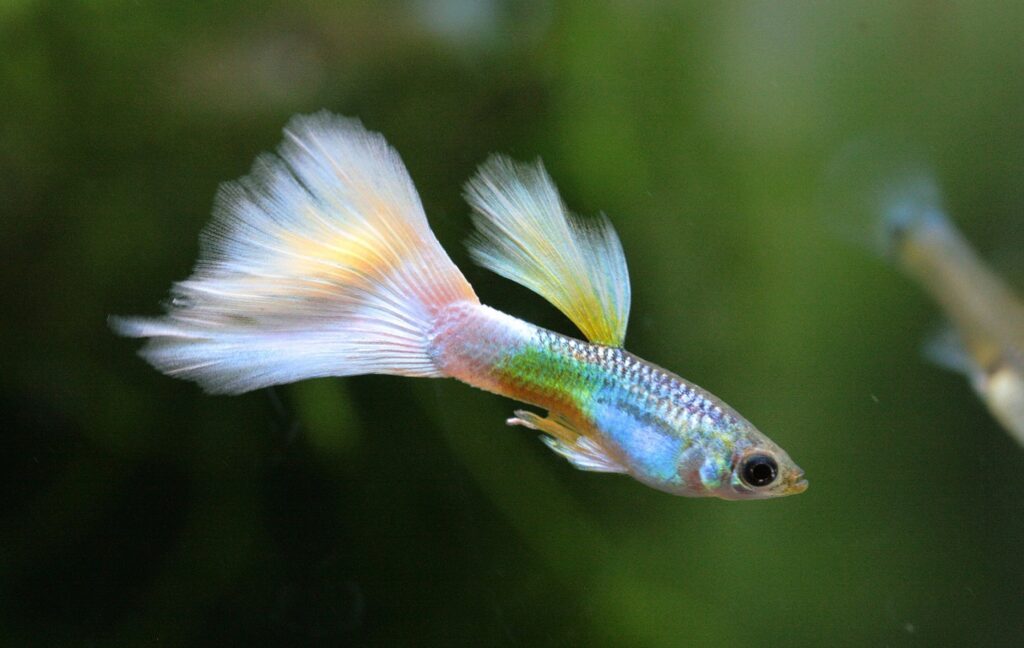
These small, brightly colored fish are popular for their vibrant hues and active personalities. They are generally peaceful and easy to care for, making them a great choice for beginners. They are also known for their live-bearing reproduction, which means that their babies are born fully formed and ready to swim.
Neon Tetras
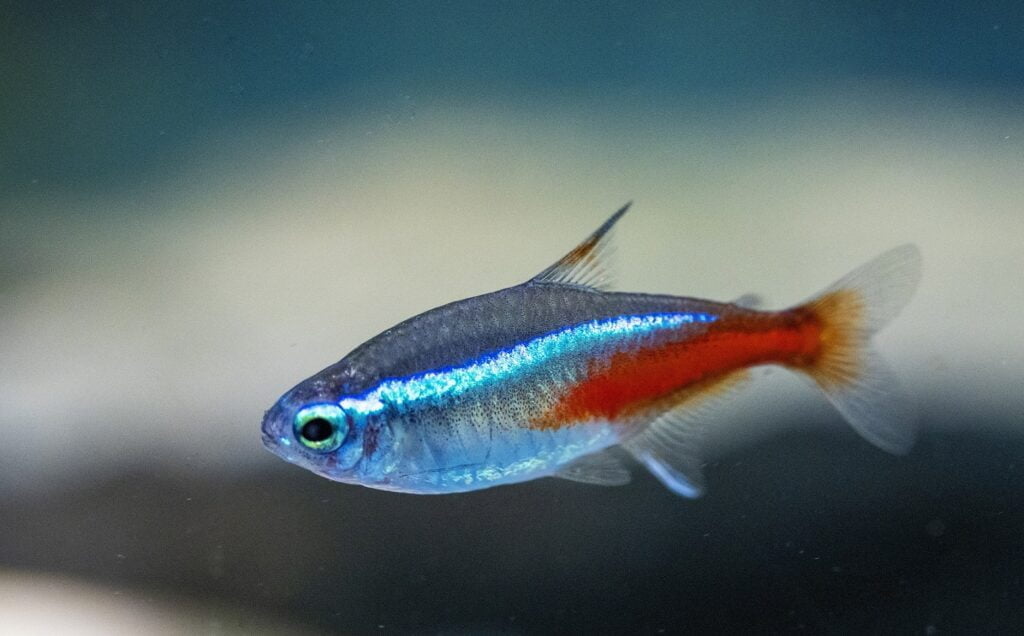
These small, schooling fish are known for their bright blue and red colors, which make them a popular choice for community tanks. They are generally peaceful and easy to care for, but they do require a well-maintained aquarium with good water quality. They are also social creatures and should be kept in groups of at least six.
Goldfish
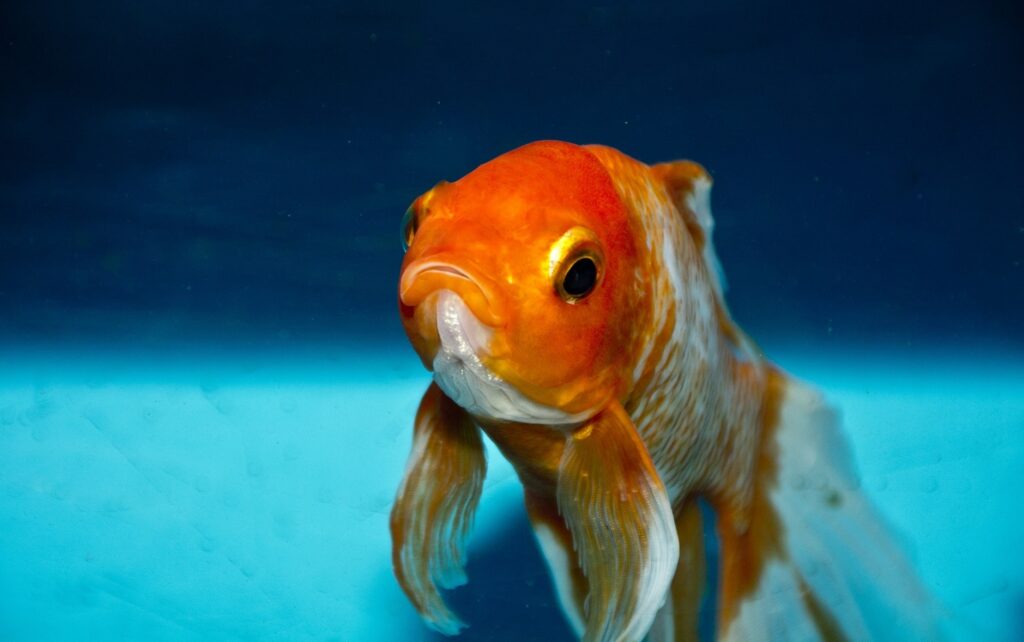
Goldfish are a classic choice for aquariums, and they come in a variety of colors and shapes. They are hardy fish that can adapt to a range of water conditions, but they do require a large aquarium with plenty of swimming space. They are also messy eaters and produce a lot of waste, so a good filtration system is essential.
Betta Fish
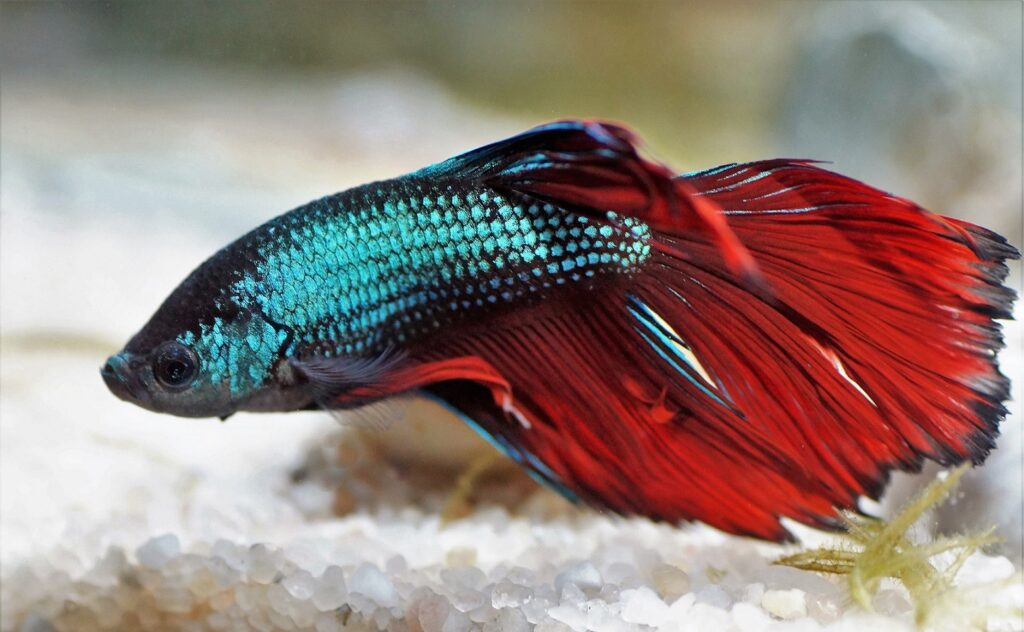
Also known as Siamese Fighting Fish, Betta Fish are known for their vibrant colors and flowing fins. They are often kept in individual tanks due to their aggressive nature, but they can also be kept in community tanks with non-aggressive fish. They are carnivores and require a diet that is high in protein.
Angelfish
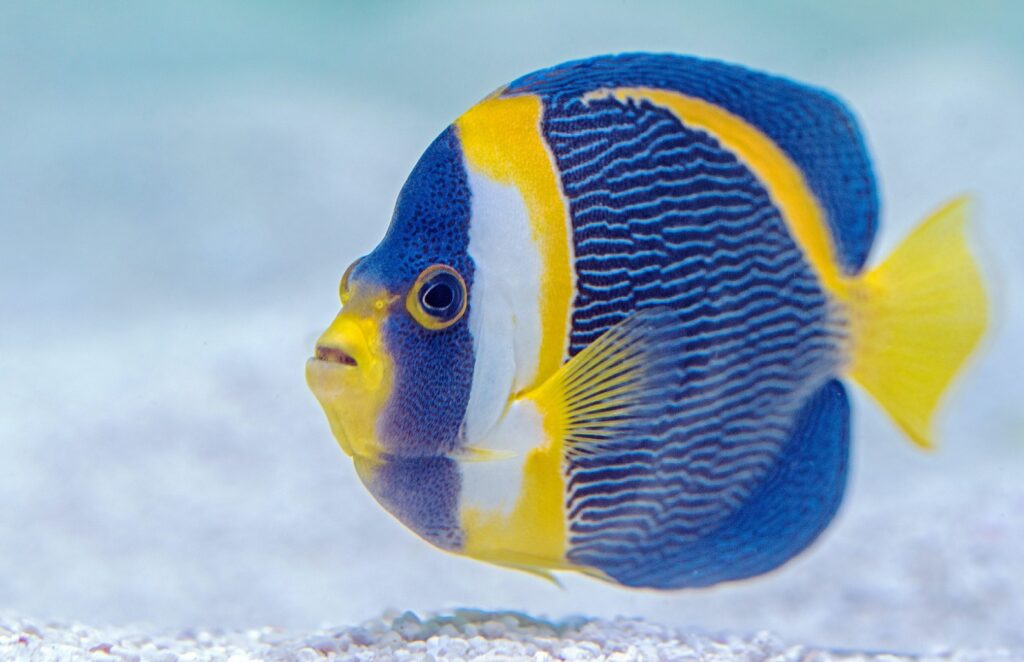
These graceful, elegant fish are known for their tall, triangular shape and can grow up to 6 inches in length. They are generally peaceful and can be kept in pairs or groups in a well-maintained aquarium. They also require plenty of swimming space and a varied diet that includes both flakes and live or frozen foods.
Corydoras Catfish
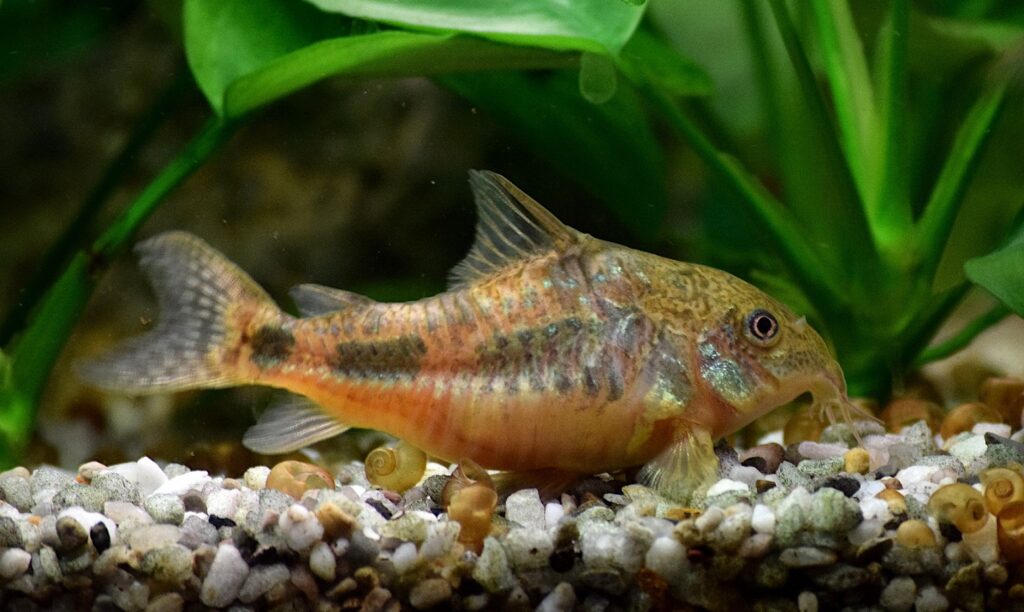
These small, bottom-dwelling fish are great for keeping the aquarium clean and are often kept in groups. They are generally peaceful and can be kept with other non-aggressive fish. They require a diet that includes both algae wafers and small live or frozen foods.
Discus Fish
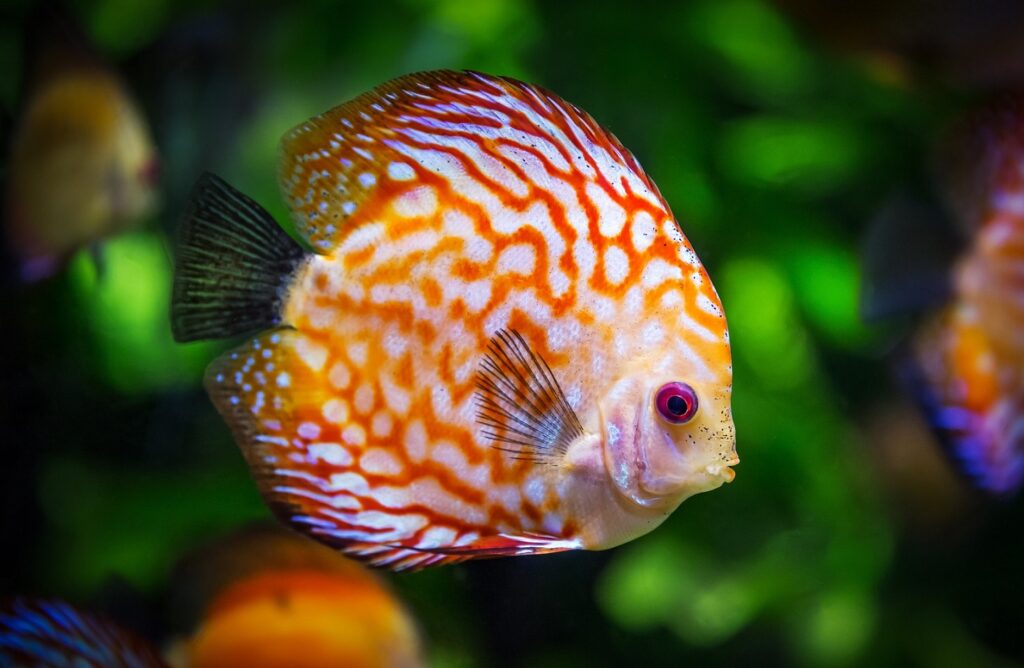
These large, colorful fish are prized by experienced aquarists and require specific water conditions to thrive. They are generally peaceful and should be kept in groups of at least six in a well-maintained aquarium. They require a varied diet that includes live or frozen foods.
African Cichlids
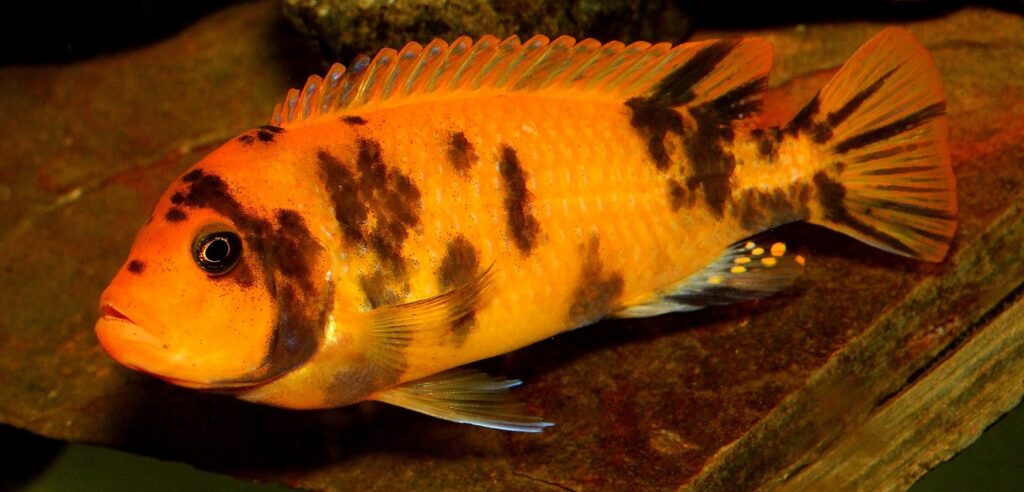
These colorful, active fish are popular for their vibrant colors and interesting behaviors. They are generally aggressive and should be kept with other cichlids in a large aquarium with plenty of hiding places. They require a varied diet that includes both flakes and live or frozen foods.
Swordtails
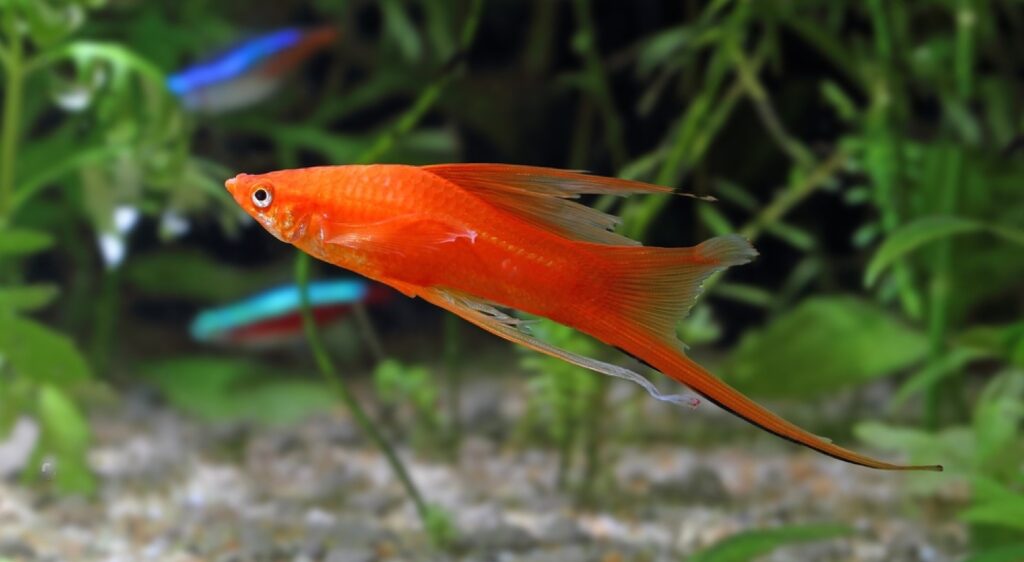
These active, peaceful fish are often kept in community tanks and are known for their distinctive sword-shaped tails. They are generally hardy and easy to care for, but they do require a well-maintained aquarium with good water quality. They require a varied diet that includes both flakes and live or frozen foods.
Cherry Shrimp
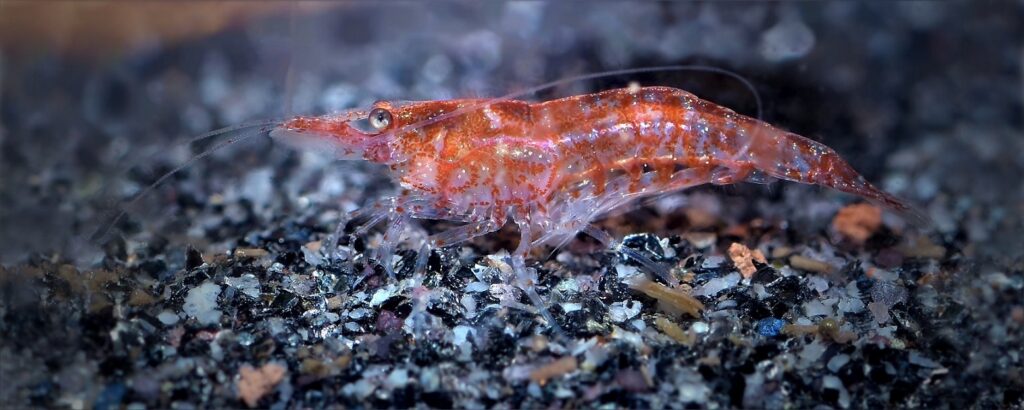
These tiny shrimp are not technically fish, but they are often kept in aquariums for their bright red color and ability to keep the tank clean. They are generally peaceful and can be kept with non-aggressive fish in a well-maintained aquarium. They require a diet that includes both algae wafers and small live or frozen foods.
Of course, there are many other types of fish that can be kept in aquariums, and the specific species you choose will depend on your preferences and the requirements of your aquarium setup. It’s important to choose fish that are compatible with each other and with the conditions of your aquarium.
What is Fish Food and What is It Made Of?
Fish food (Also called as Aquarium fish feed) is a specially formulated food that is designed to provide a balanced and nutritious diet for fish. It can come in a variety of forms, including flakes, pellets, freeze-dried or frozen options, and even live food like brine shrimp or worms.
It is made up of a combination of ingredients that are specifically formulated to provide a balanced and nutritious diet for fish. The ingredients can vary depending on the type of fish food, but some common components include:
- Fish meal or other protein sources, such as shrimp or krill
- Vegetable matter, such as spirulina, algae, or spinach
- Vitamins and minerals, such as vitamin C, calcium, and phosphorus
- Carbohydrates, such as wheat, corn, or rice
- Fats and oils, such as fish oil or soybean oil
- Preservatives and binders, such as calcium propionate or wheat gluten
The specific ingredients and proportions can vary depending on the type of fish being fed and their nutritional needs. Some fish foods are also formulated for specific stages of a fish’s life, such as juvenile or adult stages. It’s important to choose a fish food that is appropriate for your fish species and their specific nutritional requirements.
Types of Fish Food for your Underwater Friends
Above fish are popular pets that many people keep in their homes or in aquariums. While there are many aspects to consider when caring for fish, one of the most critical is the type of food you provide them. Let’s explore the different types of fish food available and discuss which ones are best for your fish.
Flake Food
Flake food is the most commonly used type of fish food. It’s a dry, processed food that is made up of a mixture of ingredients such as fish meal, vitamins, and minerals. Flake food is suitable for a wide variety of fish species, including goldfish, tetras, and bettas.
One of the advantages of flake food is its long shelf life, which can last for up to two years if stored correctly. Flake food is also affordable and easy to use. However, it’s important to note that not all flake food is created equal. Some lower quality brands may have fillers or artificial preservatives that are not good for your fish. Therefore, it’s important to choose high-quality brands that are specifically formulated for your fish species.
Pellet Food
Pellet food is another popular type of fish food. Like flake food, it’s a dry, processed food that is made up of a mixture of ingredients. Pellets come in various sizes, from small to large, and are designed to sink or float depending on your fish’s feeding habits.
Pellet food is an excellent option for larger fish that require a more substantial diet. It’s also a great option for fish that like to eat from the bottom of the tank, as you can choose pellets that sink. Pellet food is available in a variety of formulas, including those that are high in protein or fiber. However, as with flake food, it’s essential to choose high-quality pellets that are formulated for your fish species.
Frozen Food
Frozen food is a popular choice among fish enthusiasts, especially for fish that require a more varied diet. Frozen food is typically made up of small organisms such as brine shrimp, bloodworms, and krill, which are flash-frozen to preserve their nutritional value.
Frozen food is a great option for fish that are carnivorous or omnivorous, as it provides a more natural diet. However, it’s important to note that frozen food has a shorter shelf life than dry food and must be stored correctly. It’s also more expensive than dry food, so it may not be the most cost-effective option for all fish owners.
Live Food
Live food, such as brine shrimp, daphnia, and worms, is an excellent option for fish that require a more natural diet. Live food provides a source of nutrition that is closer to what fish would eat in their natural habitat. It’s also an excellent option for fish that are picky eaters or have trouble digesting dry food.
However, live food can be expensive and challenging to store. It’s also essential to ensure that any live food you provide is free from parasites or diseases that could harm your fish.
Specific Food Options for Your Fish
Now that we’ve covered the different types of fish food, let’s take a look at the specific food options for some of the most popular fish species kept in aquariums we mentioned above.
| Fish Species | Food Options |
|---|---|
| Guppies | Flake food, pellet food, freeze-dried bloodworms, brine shrimp, and other small live or frozen foods |
| Neon Tetras | Flake food, freeze-dried or frozen daphnia and brine shrimp, and other small live or frozen foods |
| Goldfish | Pellet food, vegetable matter (such as blanched lettuce or spinach), and occasional treats like freeze-dried brine shrimp or bloodworms |
| Betta Fish | Pellet food specifically formulated for bettas, freeze-dried or frozen brine shrimp or bloodworms, and other small live or frozen foods |
| Angelfish | Pellet food, freeze-dried or frozen brine shrimp or bloodworms, and other small live or frozen foods |
| Corydoras Catfish | Pellet food, algae wafers, and occasional treats like freeze-dried or frozen bloodworms or brine shrimp |
| Discus Fish | High-quality pellet food, frozen or live brine shrimp, and other small live or frozen foods |
| African Cichlids | Pellet food specifically formulated for cichlids, frozen or live brine shrimp or bloodworms, and other small live or frozen foods |
| Swordtails | Flake food, freeze-dried or frozen brine shrimp or bloodworms, and other small live or frozen foods |
| Cherry Shrimp | Algae wafers, sinking pellets, and blanched vegetables like zucchini or spinach |
Fish and Fish Food FAQ: Answering Your Most Common Questions
Welcome to our Fish and Fish Food FAQ! As aquarium enthusiasts, we understand that caring for fish can be a challenging yet rewarding experience. One of the most crucial aspects of fish care is providing the right food for your fish. In this section, we’ll answer some of the most common questions about fish food, so you can give your fish the best possible diet and keep them healthy and happy.
What types of fish food are available?
There are several types of fish food available, including flakes, pellets, freeze-dried, frozen, and live food. Flakes and pellets are the most commonly used, as they are convenient and provide a balanced diet for most fish species.
How often should I feed my fish?
The frequency of feedings depends on the species of fish and their size. As a general rule, it’s best to feed your fish once or twice a day, in small portions that they can consume in a few minutes.
How much food should I give my fish?
Overfeeding is a common mistake among fish owners. It’s essential to provide your fish with enough food to meet their nutritional needs, but not so much that they become overweight or their water becomes polluted. A good rule of thumb is to give your fish an amount of food that they can eat within a few minutes.
Can fish eat human food?
Some human foods can be harmful to fish, such as processed foods, sugary or salty snacks, and fatty foods. It’s best to stick to fish-specific food to ensure your fish receive the right nutrients for their health and growth.
Can I feed my fish live food?
Yes, some fish species benefit from live food, such as brine shrimp or worms. However, it’s essential to ensure that the live food is clean and disease-free before feeding it to your fish.
How long can a betta fish go without food?
Betta fish can go up to 14 days without food, but it’s not recommended to leave them unfed for such a long period of time. Even though they have the ability to survive for extended periods without food, it can lead to health issues and a weakened immune system.
It’s important to establish a regular feeding routine for your betta fish and avoid overfeeding, as both can have negative consequences on their health. If you plan to be away from home for an extended period, you can use automatic feeders or ask a friend or family member to feed your fish while you’re away.
How long can a fish go without food, like generally?
The amount of time that fish can go without food varies depending on the species and its individual physiology, but most healthy fish can go without food for up to two weeks. However, it’s important to note that extended periods without food can cause health issues, weakened immune systems, and even death in some cases.
What can fish eat beside fish food?
Fish can eat a variety of foods besides fish food, including:
Live food: This includes insects, larvae, worms, and other small creatures that fish can catch and eat in their natural habitat. Some common live foods for fish include brine shrimp, bloodworms, and daphnia.
Frozen or freeze-dried food: Many fish owners choose to supplement their fish’s diet with frozen or freeze-dried foods like krill, shrimp, or plankton. These foods can provide additional nutrition and variety to your fish’s diet.
Vegetables: Some fish, like herbivorous or omnivorous species, may benefit from eating vegetables like spinach, kale, or peas. These can be added to their diet in small quantities to provide essential nutrients.
Homemade food: You can also make your own fish food using ingredients like shrimp, fish, vegetables, and gelatin. There are many recipes available online, but it’s important to make sure that the food you make provides a balanced diet for your fish.
It’s important to note that not all types of food are suitable for all fish species, and overfeeding or providing the wrong type of food can lead to health problems. Always research the nutritional needs of your fish species and consult with a veterinarian or expert in fish care if you have any concerns about your fish’s diet.
What is the most common fish?
The most common fish kept as pets are likely to be either the goldfish (Carassius auratus) or the betta fish (Betta splendens). Both of these fish are relatively easy to care for and are widely available in pet stores. However, the most common fish caught and consumed by humans for food varies by region and includes species like salmon, tuna, cod, and tilapia, among others.
What to do if your fish is upside down?
If your fish is upside down and not moving, it is likely that it is experiencing a serious health issue, such as swim bladder disorder or a bacterial infection. Here are some steps you can take if you notice your fish upside down:
Check water parameters: Make sure the water parameters in the tank are within the appropriate range for your fish species. High levels of ammonia or nitrites, or low oxygen levels, can cause fish to become sick.
Isolate the fish: If you have multiple fish in the tank, consider moving the sick fish to a separate quarantine tank to prevent the spread of disease.
Adjust feeding: Overfeeding can cause digestive problems in fish, leading to swim bladder issues. Make sure you are feeding your fish an appropriate amount of food and consider switching to a high-quality, easily digestible food.
Treat with medication: Depending on the underlying issue, your fish may need medication to recover. Consult with a veterinarian or expert in fish care for the appropriate treatment.
Monitor closely: Keep a close eye on your fish and monitor its behavior and health. If it continues to deteriorate or shows no signs of improvement, consider seeking professional help or euthanizing the fish to prevent further suffering.
It’s important to note that prevention is always better than treatment. Maintaining a clean and healthy environment, feeding a balanced diet, and providing appropriate care can help prevent many common health issues in fish.
How to know if fish is sick?
It can be difficult to tell if a fish is sick since they don’t show visible signs of illness like mammals do. However, here are some common signs that indicate your fish may be sick:
Behavior changes: If your fish is lethargic, hiding, or not eating, it may be a sign of illness.
Physical changes: Look for physical changes in your fish, such as discoloration, spots, or lesions on the body, fins, or eyes.
Breathing difficulty: If your fish is gasping for air at the water surface or has rapid gill movement, it may be a sign of respiratory distress.
Erratic swimming: Fish that swim erratically or have difficulty maintaining balance may be suffering from swim bladder disorder or other health issues.
Fins clamped: If your fish’s fins are held close to its body, it may be a sign of stress or illness.
External parasites: Look for external parasites like lice or white spots on the body or fins.
If you notice any of these signs, it’s important to take action quickly. Isolate the sick fish, check the water parameters, and consult with a veterinarian or expert in fish care for appropriate treatment. Regular monitoring and observation of your fish can help you catch any health issues early and prevent the spread of disease to other fish in the tank.
How to know if fish is happy and healthy?
It’s not easy to know if a fish is happy, as they don’t show emotions like some of our pets do (i.e., dog, cat). However, there are some signs that may indicate your fish is in good health and comfortable in its environment:
Active swimming: A healthy and happy fish will actively swim around the tank, exploring and interacting with its environment.
Good appetite: A healthy fish will have a good appetite and eagerly eat its food.
Bright coloration: Fish with bright and vibrant colors are often in good health and well cared for.
Clear eyes: Clear and bright eyes are a sign of a healthy fish.
Responsive behavior: If your fish responds to your presence or interacts with you when you approach the tank, it may be a sign that it is comfortable in its environment.
Comfortable in group: If your fish is a social species, it will be more content in a group with other fish of its kind.
Overall, a happy and healthy fish is one that is comfortable in its environment, has access to clean water and proper nutrition, and is free from stress and disease. Providing a well-maintained tank and a suitable habitat for your fish will help ensure its happiness and well-being.
What human food can fish eat?
It is generally not recommended to feed fish human food, as it can be difficult to ensure that it provides a balanced diet and meets all their nutritional needs. However, some human foods can be given to fish in moderation as a treat or supplement to their regular diet. Here are some examples:
Vegetables: Cooked or blanched vegetables such as spinach, peas, and broccoli can be given to herbivorous fish like goldfish and tilapia.
Fruits: Some fish, like cichlids, enjoy fruits such as bananas, watermelon, and mango.
Shrimp: Small pieces of cooked shrimp can be given to carnivorous fish like bettas and angelfish.
Insects: Some fish, like guppies and tetras, enjoy small live or freeze-dried insects such as crickets and mealworms.
It’s important to note that human food should not make up a significant portion of a fish’s diet, and any treats should be given in moderation. Additionally, certain foods like bread, cheese, and processed foods should be avoided as they can be harmful to fish. Always check the dietary needs of your specific fish species and consult with a veterinarian or experienced aquarist before introducing any new foods to their diet.
How much is fish food?
The cost of fish food can vary depending on factors such as the brand, the type of food, the quantity, and the location. In general, basic dry fish food can cost anywhere from a few dollars to around $20 or more for larger containers.
Specialty fish food, such as frozen or live food, can be more expensive. Additionally, high-end or premium fish food brands can also be more expensive. It’s important to consider the needs of your fish and budget accordingly when purchasing fish food.
Can you overfeed fish?
Yes, overfeeding can cause health problems for fish and lead to poor water quality in the aquarium. It’s best to follow the feeding guidelines for your particular fish species and avoid overfeeding.
How long does fish food last?
The shelf life of fish food varies depending on the type and brand. Generally, dry fish food can last up to a year if stored properly in a cool, dry place. Wet or frozen fish food should be used within a few months of opening.
Can goldfish eat betta fish food?
Goldfish and betta fish have different dietary requirements. Goldfish are omnivores and need a varied diet that includes both plant and animal-based foods. On the other hand, betta fish are carnivores and need a diet that is high in protein.
While it may be tempting to feed your goldfish betta fish food, it may not provide them with the necessary nutrients they need to stay healthy. Therefore, it is recommended to choose food specifically formulated for each species to ensure they get the appropriate nutrition.
Dive in and explore the world of fish food – your underwater companions will thank you for it!
In conclusion, there are many types of fish food available, each with its own advantages and disadvantages. When choosing a fish food, it’s essential to consider your fish’s species, feeding habits, and nutritional needs.
Always choose high-quality food that is specifically formulated for your fish and store it correctly to ensure it remains fresh and nutritious. With the right diet, your fish can thrive and provide you with hours of enjoyment.
Also Read: Cactus and Succulent Care Tips Guide for Beginners
Well, what do you think about the article?
Did you enjoy reading “Choosing the Right Fish Food: A Guide to Keeping Your Fish Healthy and Happy“? If so, please comment down below. We would love to hear your thoughts about this ultimate fish food guide.
To see more content like this check the Guides section of Money For My Beer.

Chief Editor and Website Owner.
Hey, I’m Ryan, a software guy and the owner of Money For My Beer. I’m the one making sure all our posts on the site are awesome.
I usually handle tech stuff that might not be super interesting to everyone, like programming enterprise software, apps, games, and websites. Cool stuff, right? I also help clients with SEO and sometimes create games.

